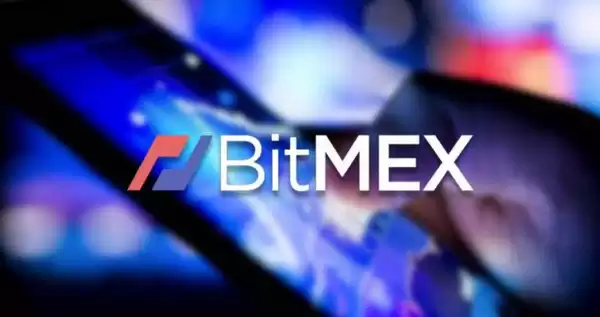-
 Bitcoin
Bitcoin $114500
-0.31% -
 Ethereum
Ethereum $3648
1.11% -
 XRP
XRP $3.033
-0.27% -
 Tether USDt
Tether USDt $0.9999
-0.01% -
 BNB
BNB $758.5
-0.32% -
 Solana
Solana $167.5
1.48% -
 USDC
USDC $0.9998
-0.02% -
 TRON
TRON $0.3331
0.74% -
 Dogecoin
Dogecoin $0.2039
0.25% -
 Cardano
Cardano $0.7419
-0.46% -
 Hyperliquid
Hyperliquid $39.21
2.66% -
 Stellar
Stellar $0.4049
-1.95% -
 Sui
Sui $3.483
-0.56% -
 Bitcoin Cash
Bitcoin Cash $570.8
2.89% -
 Chainlink
Chainlink $16.67
-0.57% -
 Hedera
Hedera $0.2470
-1.57% -
 Ethena USDe
Ethena USDe $1.001
0.00% -
 Avalanche
Avalanche $22.36
1.52% -
 Litecoin
Litecoin $123.4
4.35% -
 UNUS SED LEO
UNUS SED LEO $8.989
0.09% -
 Toncoin
Toncoin $3.324
-2.40% -
 Shiba Inu
Shiba Inu $0.00001219
-1.30% -
 Uniswap
Uniswap $9.811
2.54% -
 Polkadot
Polkadot $3.662
-0.07% -
 Monero
Monero $295.5
-3.85% -
 Dai
Dai $1.000
0.01% -
 Bitget Token
Bitget Token $4.345
0.24% -
 Cronos
Cronos $0.1380
0.95% -
 Pepe
Pepe $0.00001044
-1.14% -
 Ethena
Ethena $0.5981
-4.24%
How to play BitMEX leverage
Leverage in BitMEX empowers traders to amplify their positions and profits, but necessitates cautious risk management to mitigate potential losses.
Nov 10, 2024 at 05:19 pm

Step 1: Understanding Leverage in BitMEX
Leverage, a fundamental concept in financial trading, allows traders to magnify their positions by borrowing funds. In BitMEX, leverage is expressed as a ratio, such as 10x or 100x. This means that for every $1 you deposit, you can trade with $10 or $100, respectively.
The primary advantage of leverage is the potential for amplified profits. However, it also carries significant risks. Losses can be magnified just as easily as gains, and severe fluctuations in market prices can lead to rapid account depletion or even liquidation.
Step 2: Choosing the Right Leverage
The optimal leverage ratio for any given trade depends on various factors, including:
- Risk tolerance: Traders with a low risk tolerance should consider using lower leverage or no leverage at all.
- Market conditions: Leverage can be more beneficial in volatile markets where price swings can generate larger returns.
- Position size: Higher leverage can allow traders to take larger positions with less capital, but it also increases the potential risks.
It's crucial to assess your own risk tolerance and trading strategy before determining the appropriate leverage level. Remember, higher leverage is not always better, and it's better to err on the side of caution.
Step 3: Opening a Position with Leverage
Once you've determined the desired leverage ratio, follow these steps to open a leveraged position on BitMEX:
- Log in to your BitMEX account.
- Choose the instrument you want to trade.
- Specify the order type (e.g., market order, limit order).
- Enter the leverage ratio in the designated field.
- Enter the quantity or amount of the order.
- Review the order details and confirm your trade.
Step 4: Managing Risk with Leverage
Leveraged positions require constant monitoring and risk management. Here are some strategies to mitigate potential losses:
- Using stop-loss orders: Stop-loss orders automatically close your position at a predetermined price to limit potential losses.
- Reducing leverage during volatile periods: In highly volatile markets, it's prudent to reduce leverage or close leveraged positions to avoid sudden price fluctuations.
- Monitoring positions regularly: Keep a close eye on your leveraged positions and adjust them as needed, such as adding margin to prevent liquidation.
- Hedging positions: Using opposite positions or futures contracts can help offset losses in one position by gains in another.
Step 5: Closing a Leveraged Position
When you're ready to close a leveraged position, follow these steps:
- Log in to your BitMEX account.
- Choose the instrument that the leveraged position is in.
- Place a closing order in the opposite direction of your initial order.
- Enter the amount or quantity of the closing order.
- Review the order details and confirm the trade.
After the closing order is executed, the leveraged position will be closed, and any profit or loss will be realized.
Disclaimer:info@kdj.com
The information provided is not trading advice. kdj.com does not assume any responsibility for any investments made based on the information provided in this article. Cryptocurrencies are highly volatile and it is highly recommended that you invest with caution after thorough research!
If you believe that the content used on this website infringes your copyright, please contact us immediately (info@kdj.com) and we will delete it promptly.
- Altcoin Alert: Is Punisher Coin the Presale to Pounce On?
- 2025-08-06 06:50:11
- XRP Price, Bitwise, and the 2030 Forecast: Will XRP Hit the Big Time?
- 2025-08-06 06:50:11
- Ruvi AI: The AI Token Primed for CMC Listing and Explosive Growth
- 2025-08-06 06:30:13
- Sushi's Sizzling Summer: AMA on August 6th & Market Moves!
- 2025-08-06 06:30:13
- Akash Network, NVIDIA Blackwell, and Decentralized AI: A New Era?
- 2025-08-06 06:35:11
- Metamask, Altcoins, and the Move: Is Cold Wallet the Future?
- 2025-08-06 04:30:12
Related knowledge

Why is my Bitstamp futures position being liquidated?
Jul 23,2025 at 11:08am
Understanding Futures Liquidation on BitstampFutures trading on Bitstamp involves borrowing funds to open leveraged positions, which amplifies both po...

How to report Bitstamp futures for taxes?
Jul 30,2025 at 08:35am
Understanding Bitstamp Futures and Taxable EventsWhen trading Bitstamp futures, it’s essential to recognize that these financial instruments are treat...

Does Bitstamp offer inverse contracts?
Jul 23,2025 at 01:28pm
Understanding Inverse Contracts in Cryptocurrency TradingIn the realm of cryptocurrency derivatives, inverse contracts are a specific type of futures ...

What is the difference between futures and perpetuals on Bitstamp?
Jul 27,2025 at 05:08am
Understanding Futures Contracts on BitstampFutures contracts on Bitstamp are financial derivatives that allow traders to speculate on the future price...

How to find your Bitstamp futures trade history?
Jul 23,2025 at 08:07am
Understanding Bitstamp and Futures Trading AvailabilityAs of the current state of Bitstamp’s service offerings, it is critical to clarify that Bitstam...

Can I use a trailing stop on Bitstamp futures?
Jul 23,2025 at 01:42pm
Understanding Trailing Stops in Cryptocurrency TradingA trailing stop is a dynamic type of stop-loss order that adjusts automatically as the price of ...

Why is my Bitstamp futures position being liquidated?
Jul 23,2025 at 11:08am
Understanding Futures Liquidation on BitstampFutures trading on Bitstamp involves borrowing funds to open leveraged positions, which amplifies both po...

How to report Bitstamp futures for taxes?
Jul 30,2025 at 08:35am
Understanding Bitstamp Futures and Taxable EventsWhen trading Bitstamp futures, it’s essential to recognize that these financial instruments are treat...

Does Bitstamp offer inverse contracts?
Jul 23,2025 at 01:28pm
Understanding Inverse Contracts in Cryptocurrency TradingIn the realm of cryptocurrency derivatives, inverse contracts are a specific type of futures ...

What is the difference between futures and perpetuals on Bitstamp?
Jul 27,2025 at 05:08am
Understanding Futures Contracts on BitstampFutures contracts on Bitstamp are financial derivatives that allow traders to speculate on the future price...

How to find your Bitstamp futures trade history?
Jul 23,2025 at 08:07am
Understanding Bitstamp and Futures Trading AvailabilityAs of the current state of Bitstamp’s service offerings, it is critical to clarify that Bitstam...

Can I use a trailing stop on Bitstamp futures?
Jul 23,2025 at 01:42pm
Understanding Trailing Stops in Cryptocurrency TradingA trailing stop is a dynamic type of stop-loss order that adjusts automatically as the price of ...
See all articles

























































































